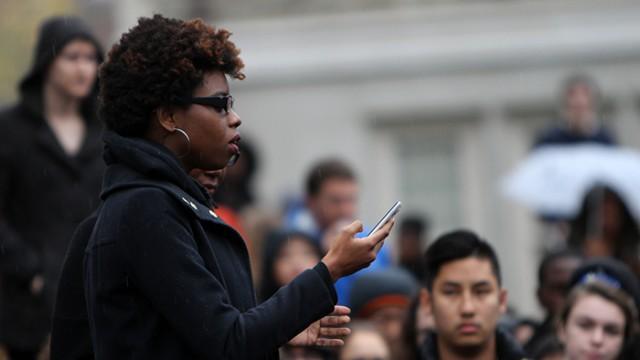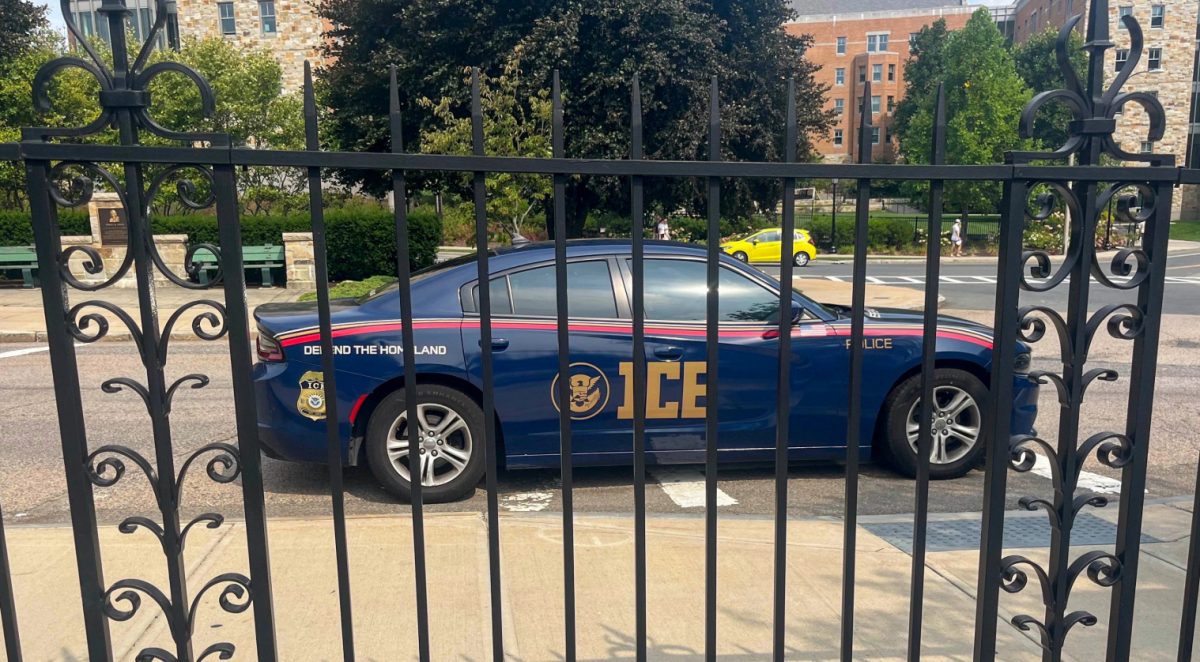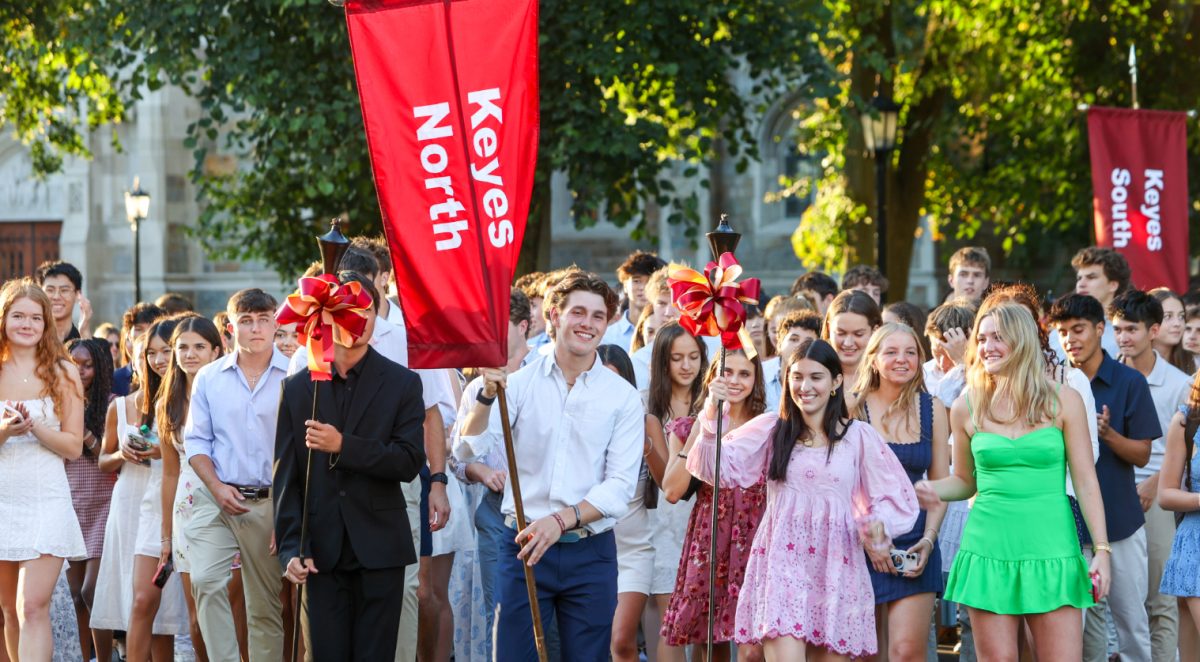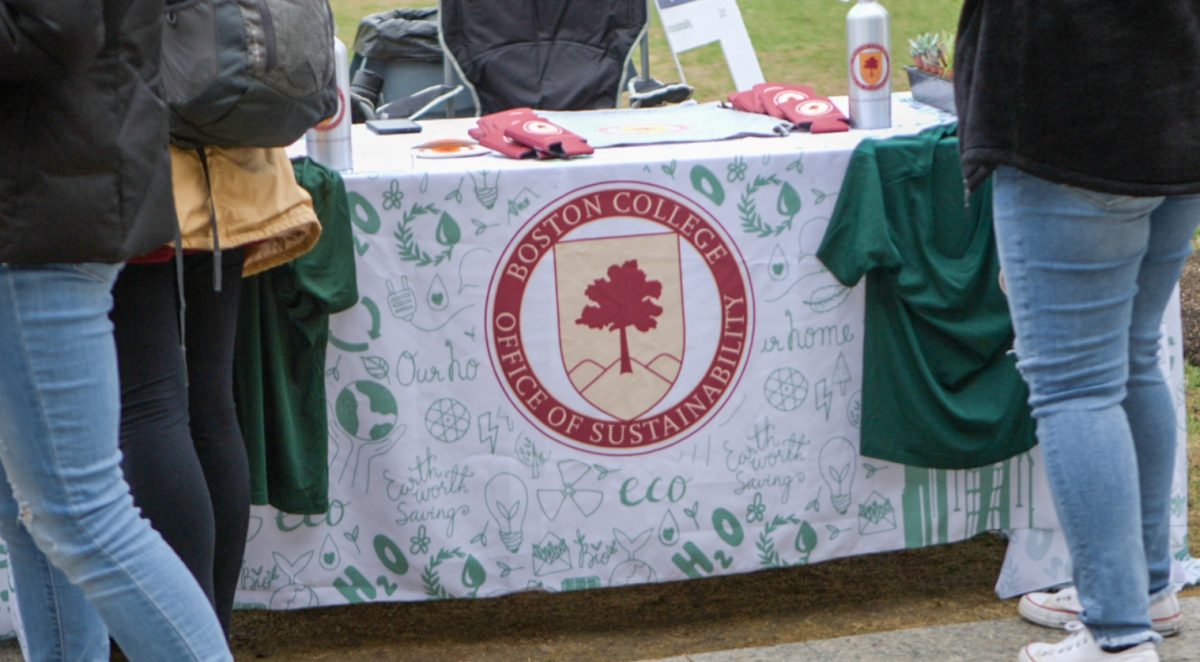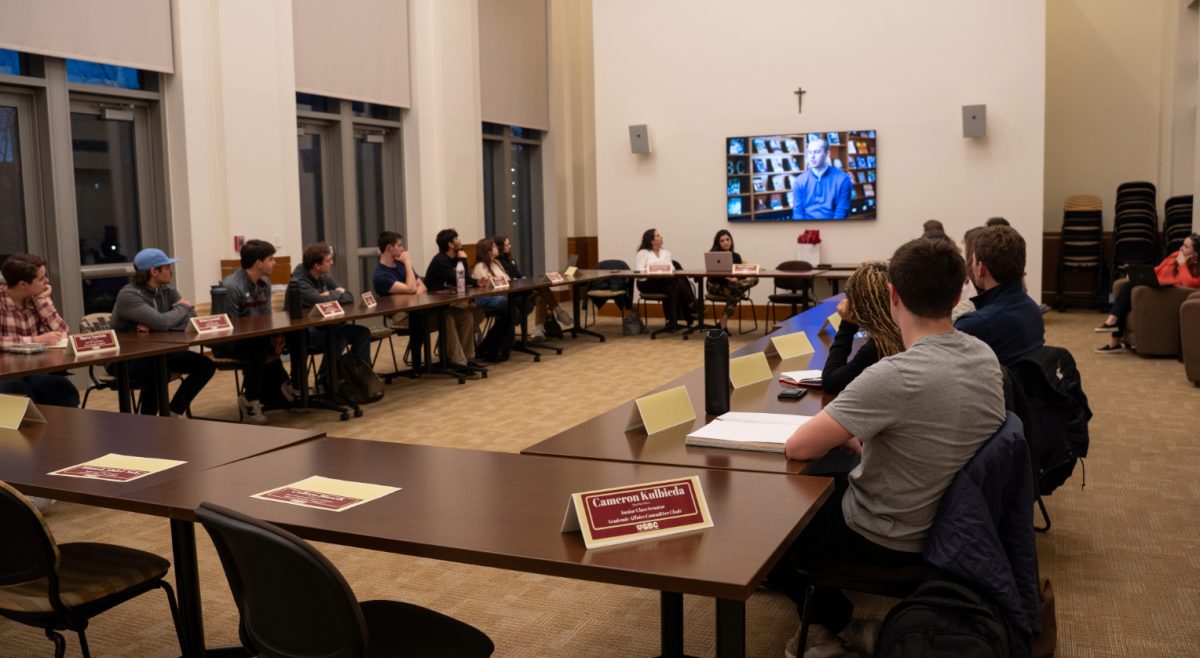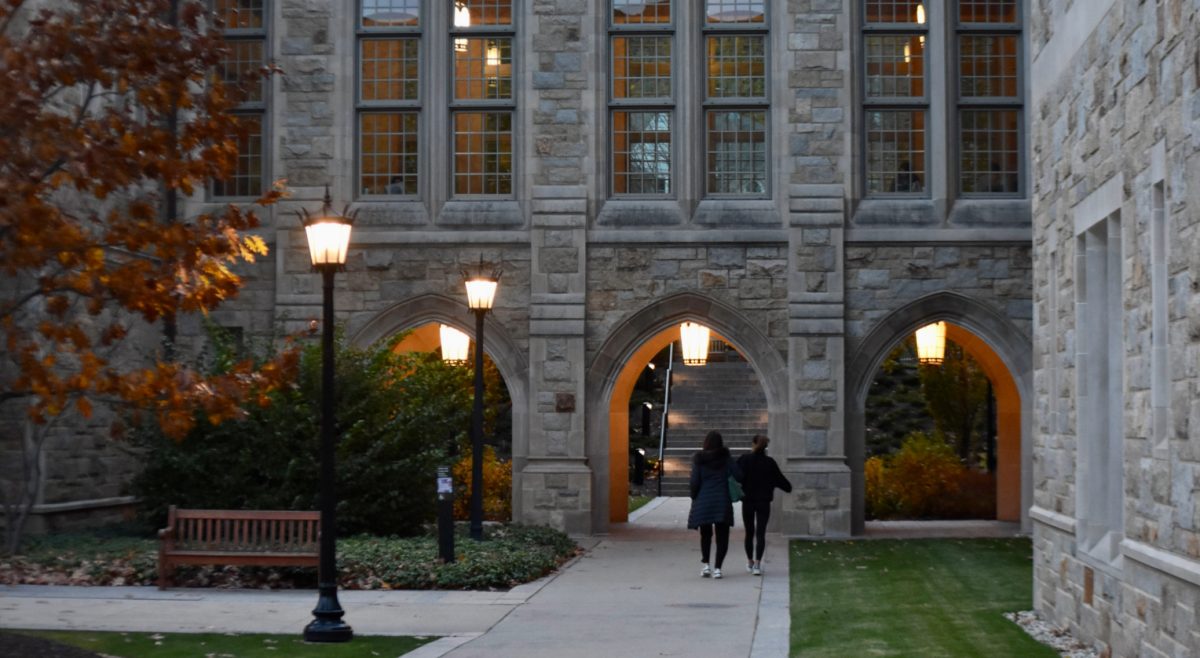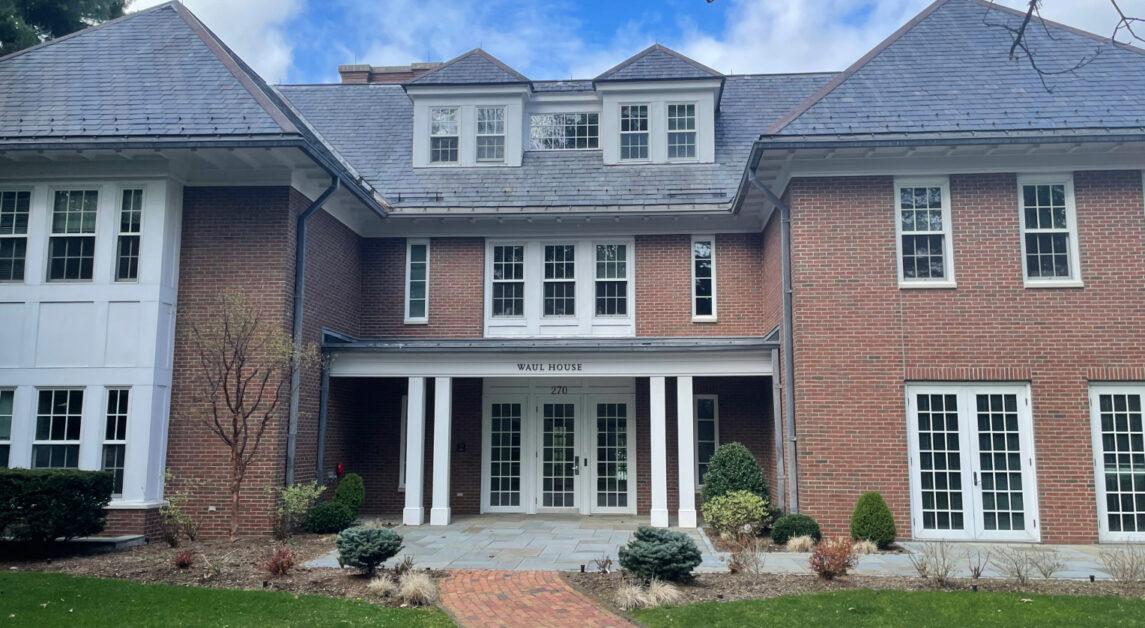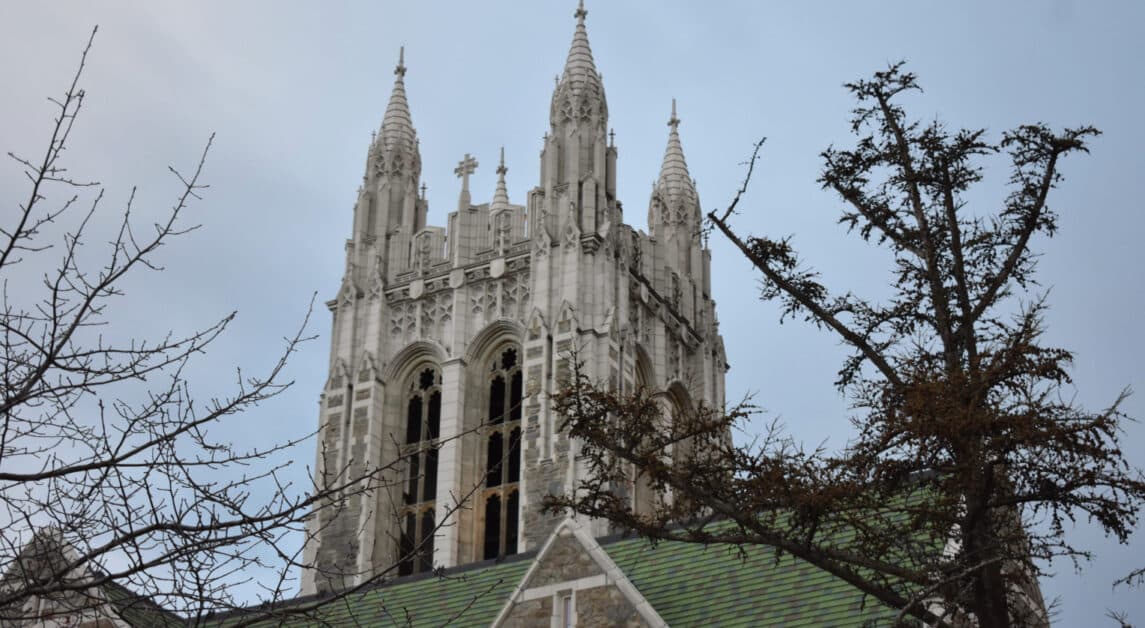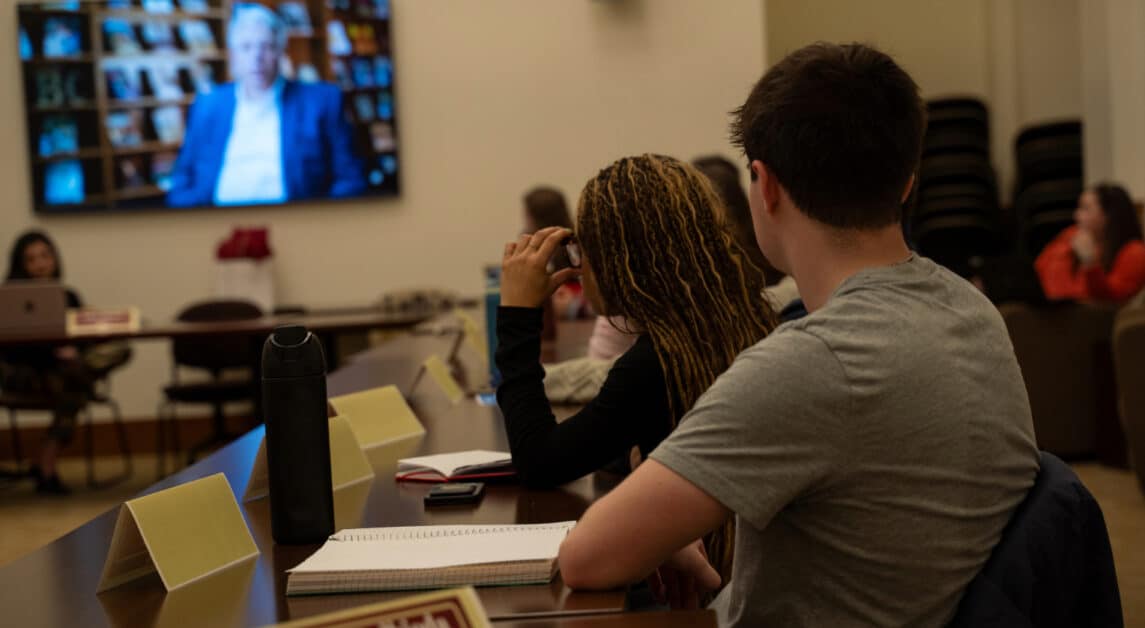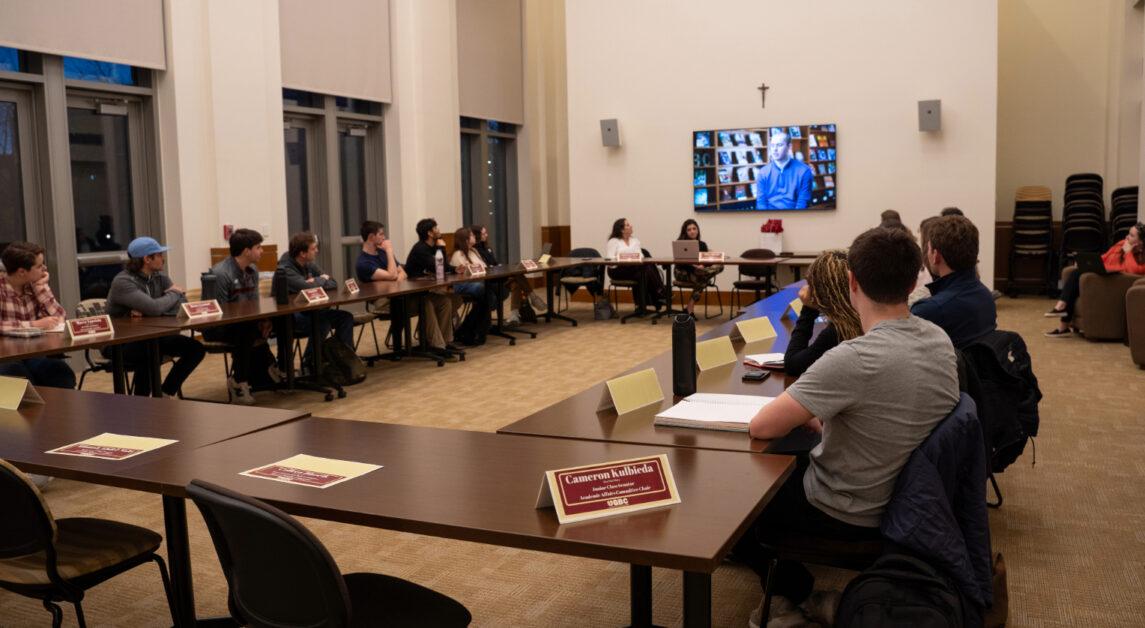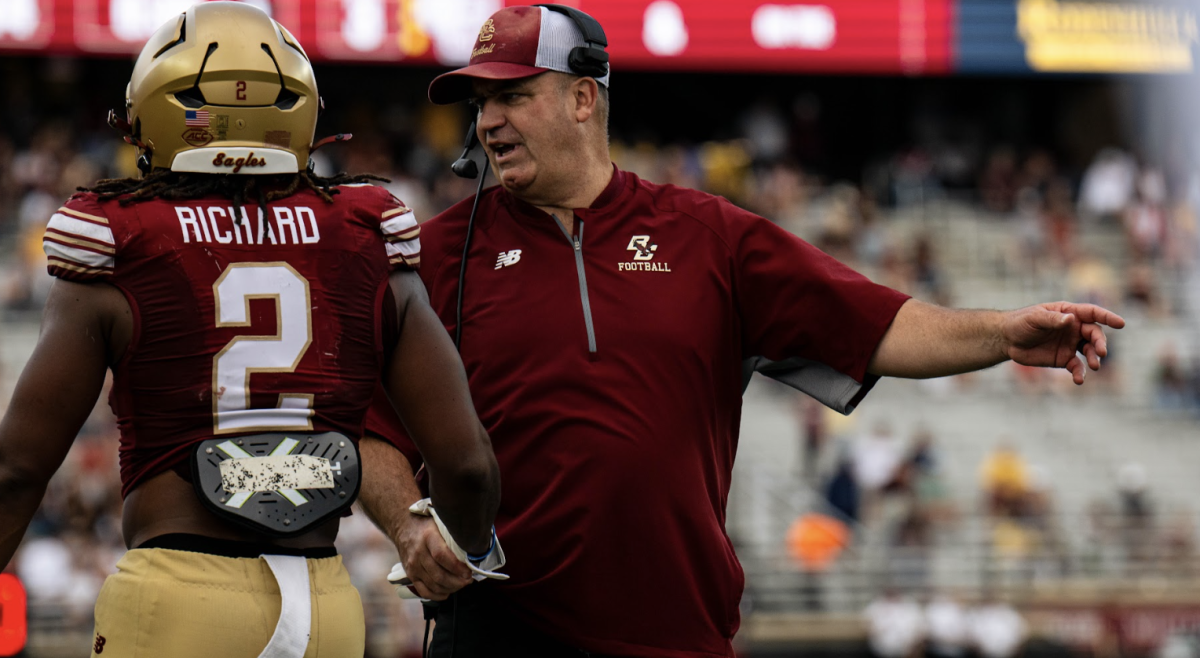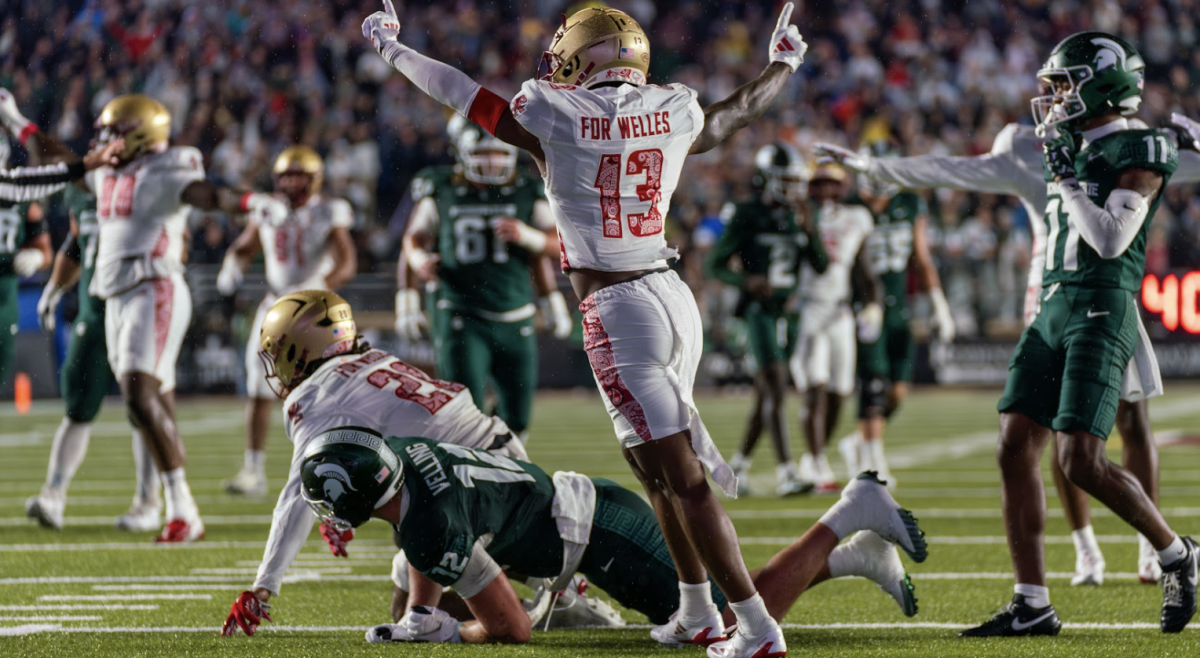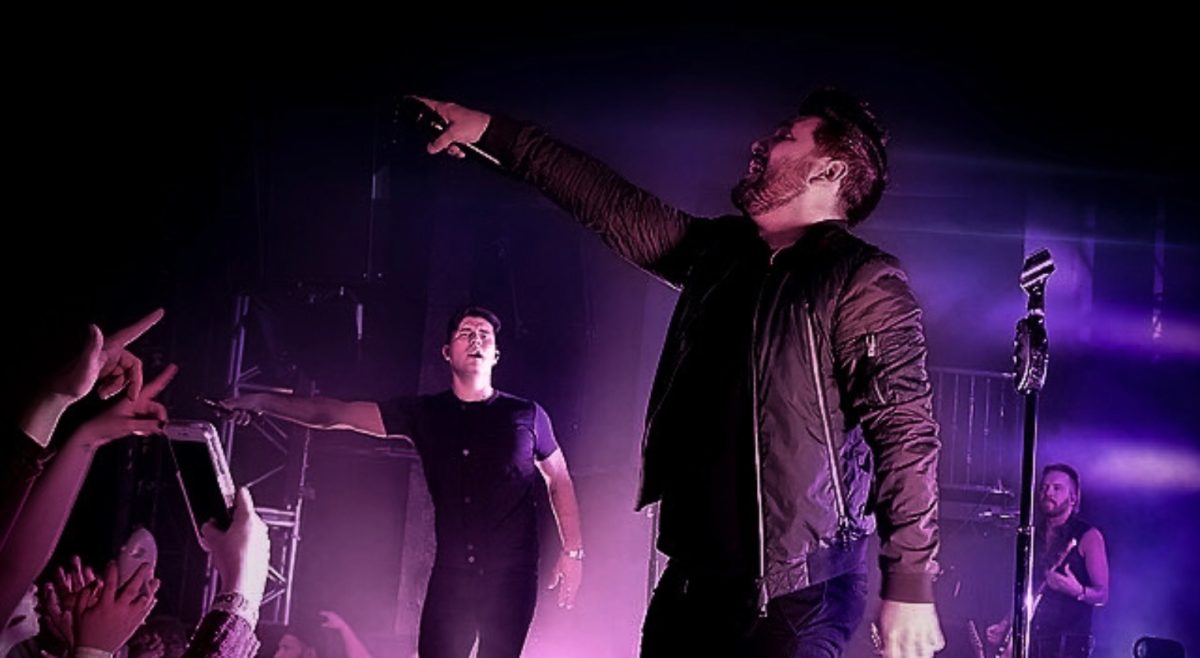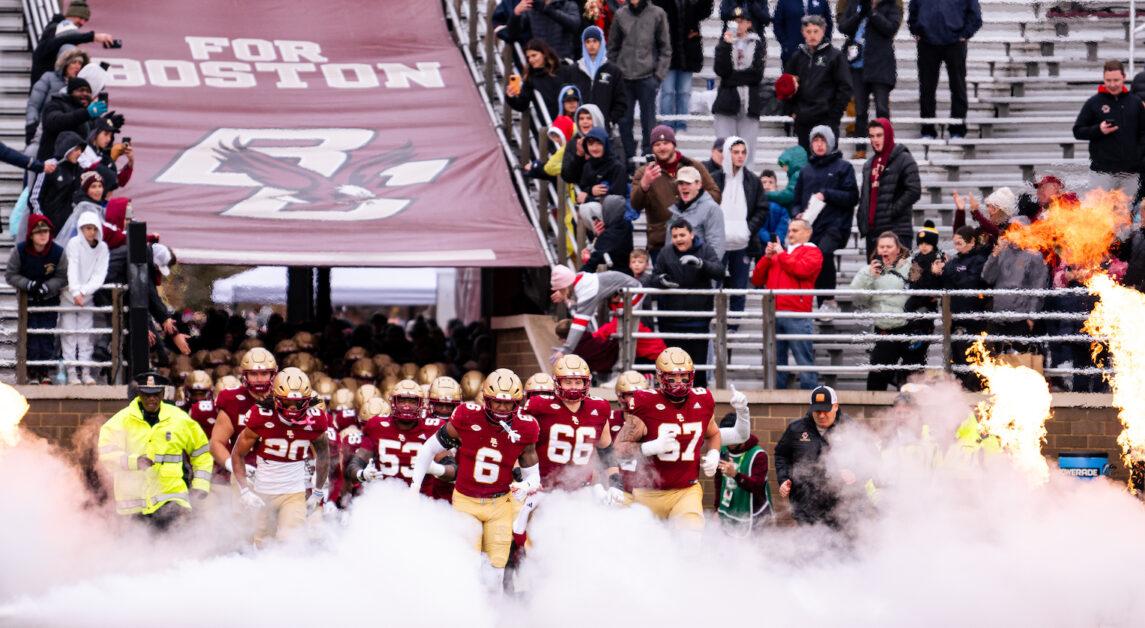Race issues became a leading subject on Boston College’s campus, as well as other universities’ campuses, throughout the 2015-16 academic year. During this time, the Undergraduate Government of Boston College (UGBC) worked to facilitate conversation between students and the administration on how to make BC a more inclusive campus, but failed to accomplish many tangible policy changes.
Entering into her role as vice president of diversity and inclusion UGBC last fall, Afua Laast, LSOE ’16, said that she had a few goals—to make BC more inclusive, to get the administration to take more notice of their cause, to have more investment in the AHANA community at BC, and to have a bigger presence on campus.
As other universities across the nation began to protest for racial equality, Laast said she began to study these movements and try to figure out how to best contextualize them at BC.
The student group Eradicate Boston College Racism began to host protests without the administration’s approval. The group protested following a talk by the writer Ta-Nehisi Coates, 30 members of Eradicate stood up in the crowd with signs that said “Eradicate #BostonCollegeRacism” and duct tape over their mouths in protest of they consider to be institutional racism at BC. One of the members also took the stage, talking for 10 minutes about the inherent racial hypocrisy at BC.
It also hosted a protest during which members of the group began outside of the doors of a Board of Trustees meeting in Gasson Hall and then walked across campus, singing Christmas carols with altered lyrics, including “Leahy Baby” and “Walking in a White Man’s Wonderland.” This event was part of the group’s “12 Days of BC Racism” campaign, which was held over the 12 days before Winter Break last winter. In addition to caroling, the group raised money from BC alumni, gave gifts to supportive faculty members, and distributed fliers that compared BC’s responses to racism to other universities’ responses.
Working within the administration can be difficult, Laast said, because of its hierarchical nature.
“There was an understanding among groups such as Faces, the culture clubs, Eradicate, and UGBC that while we all may have had different tactics and roles to play, we all ultimately had a common vision.”
—Thomas Napoli, president of UGBC and MCAS ’16
For example, at the University of Missouri, the entire football team stood with the movement, something Laast does not believe a BC team would do. The University, she said, also requires students to register protests, which not all other universities do.
UGBC hosted a rally in November to express its solidarity with the University of Missouri in response to recent online death threats directed at the university’s black students.
“The movements this year on campus were certainly not isolated to the Undergraduate Government of Boston College or the AHANA Leadership Council,” Thomas Napoli, president of UGBC and MCAS ’16 said in an email. “There was an understanding among groups such as FACES, the culture clubs, Eradicate, and UGBC that while we all may have had different tactics and roles to play, we all ultimately had a common vision.”
Later that month, UGBC released “Towards a More Inclusive Community,” a document that called for more AHANA faculty and staff. Whenever UGBC needs a faculty member to speak about race, Laast said, it turns to the same few professors. This, she said, is not fair to the faculty who have busy schedules.
In response, Vice President for Student Affairs Barb Jones released a letter to UGBC acknowledging the dialogue surrounding the issue of inclusion, though not by the Jan. 19 deadline UGBC executives requested. In the letter, she noted that BC is committed to retaining and increasing the number of diverse students, faculty and staff. She also said that the University will not add a vice president for institutional diversity, one of the positions requested in UGBC’s proposal. Instead, BC will focus on existing committees. Later, the Office of Student Affairs more specifically addressed UGBC’s proposal with a specific action plan. The list included hiring more AHANA faculty and staff, creating a diversity committee within the Division of Student Affairs, creating a new platform for students to report harassment, and expanding diversity and cultural competency training for students.
The document UGBC released also asked for more AHANA students. This, however, is a difficult issue to address because BC does accept a large number of students of color, Laast said. The issue, though, is that not many of these students choose to enroll at BC.
“That’s the whole chicken and egg kind of thing,” Laast said.
She believes that if BC hired more faculty and staff of color, AHANA students would be more likely to enroll because they would see people who look like them in all ranks of the institution.
“I don’t know which one they can do first, but where we are in history, you kind of have to do both—try to raise your enrollment, try to raise faculty of color on your staff, and hopefully at some point, five, 10, 15 years from now, they’ll equalize, and it’s a nice symbiotic relationship,” Laast said. “But as of now, we don’t have that.”
In addition to the letters released by Student Affairs, Jones has held multiple dinners with undergraduate and graduate students.
“I don’t know which one they can do first, but where we are in history, you kind of have to do both—try to raise your enrollment, try to raise faculty of color on your staff, and hopefully at some point, five, 10, 15 years from now, they’ll equalize, and it’s a nice symbiotic relationship. But as of now, we don’t have that.”
—Afua Laast, vice president of diversity and inclusion for UGBC and MCAS ’16
Other small steps have been made by the administration, Laast said. Provost and Dean of Faculties David Quigley, she said, asked all departments to diversify their staff as part of the University Strategic Planning Initiative.
There were also several meetings for students and administration to gather in once space and discuss race issues, Jones said in an email.
The administration began several new initiatives, some of which were inspired by “Towards a More Inclusive Community” while others were already in the planning stages, Jones said.
The administration also revamped the Mosaic program, an educational program for all incoming students, expanded training for students by forming a new partnership with the Anti-Defamation League, introduced a new online module on harassment for faculty and staff through Human Resources, and assessed the character and role of the Diversity Steering Committee and added two students to the committee, who will begin in the fall of 2016, Napoli said in an email.
Jones added that the University increased the number of students participating in the Campus of Difference program, created a Diversity and Inclusion webpage that will be launched in the near future under the “About Us” section of the BC website, and expanded the “Campus of Difference” workshops to more groups, including Appalachia student leaders, Freshmen League captains, Kostka Women’s Experience, Emerging Leaders Program, and UGBC, among others.
“The University will not stand still on these important issues and is committed to making BC the most welcoming and inclusive community possible,” Jones said in an email.
James Kale, chair of AHANA Leadership Council and LSOE ’16, said that although the administration is taking steps to improve race relations on campus, it is not being transparent enough in its efforts.
“I don’t know why this is,” Kale said.
In February, UGBC hosted a town hall for faculty, administrators, and students to promote racial equality on campus.
“The University will not stand still on these important issues and is committed to making BC the most welcoming and inclusive community possible.”
—Barbara Jones, executive vice president of Student Affairs
Laast also said that even though African and African Diaspora studies was added to the Core curriculum, the Core is still too Eurocentric.
“You’re neglecting a large part of the world, which is very problematic,” she said. ”You don’t show people of color in powerful positions, which just adds to silencing marginalized communities.”
Laast would also like to see more education revolving around cultural diversity, rather than it just being a single class Core requirement. The University, however, is not ready to get rid of the requirement, she said, because most courses at BC do not yet integrate diversity into their curriculums.
Another problem, Laast said, is that students are not registering for the courses that do implement diversity. For example, as of right now, she said, only two students are enrolled in the Asian Studies minor.
“It’s very limited because we don’t publicize it,” Laast said. “If we publicized those courses as much as we publicize Perspectives and PULSE, then people would know about it and would take it.”
Another component to the “Towards a More Inclusive Community” was that UGBC wanted the administration to admit that institutional racism exists at BC. Laast said it was unwilling to say it because it did not want to be speaking for the entire BC community. Admitting this, however, does not mean that you are a bad person, she said.
“So just like admit it, say you’re going to fix it, and keep moving on with your life, but BC won’t do it,” she said. “People are seeing it from a more personal perspective, which is problematic because it’s not a personal thing anymore, it’s a system thing.”
She said that a lot of the problems that arose this year were because no department thought that it was racist and was, therefore, unwilling to address the issue. Because no department would take responsibility for the institutional racism, nothing was done.
Napoli experienced similar difficulties in getting an institutional response to an institutional problem.
“This issue—working to persuade BC that it needed an institutional response and not just sporadic actions—was in my opinion the biggest challenge that UGBC and other advocates faced,” Napoli said.
Laast is unsure if she did all that she could do during her term, but she is glad that she is exiting office with a good relationship with the administration still in tact.
“Are people acting as fast as I would like? No,” she said. “But are more people conscious? Yes.”
Jones said that the administration will continue to work on race issues.
“Racism is a matter of concern for all of society, and maintaining an inclusive community where all students can thrive is a steadfast commitment of Boston College,” Jones said.
Although UGBC and Eradicate Boston College Racism are addressing these issues from two different perspectives, they have similar end goals, she said.
“As the administration, you can’t be on campus and ignore that,” she said.
Laast does believe that goals that she failed to accomplish, such as a resource center for AHANA students, can be met within the coming years if the dialogue that has taken place this year with administrators continues.
She said that future UGBC members need to understand that each different cultural group on campus experiences BC in different ways and is met with different challenges.
“Do your homework as for who you’re advocating for and what their unique struggles have been before you step into a room” she said.
Featured Image by Julia Hopkins / Heights Editor

